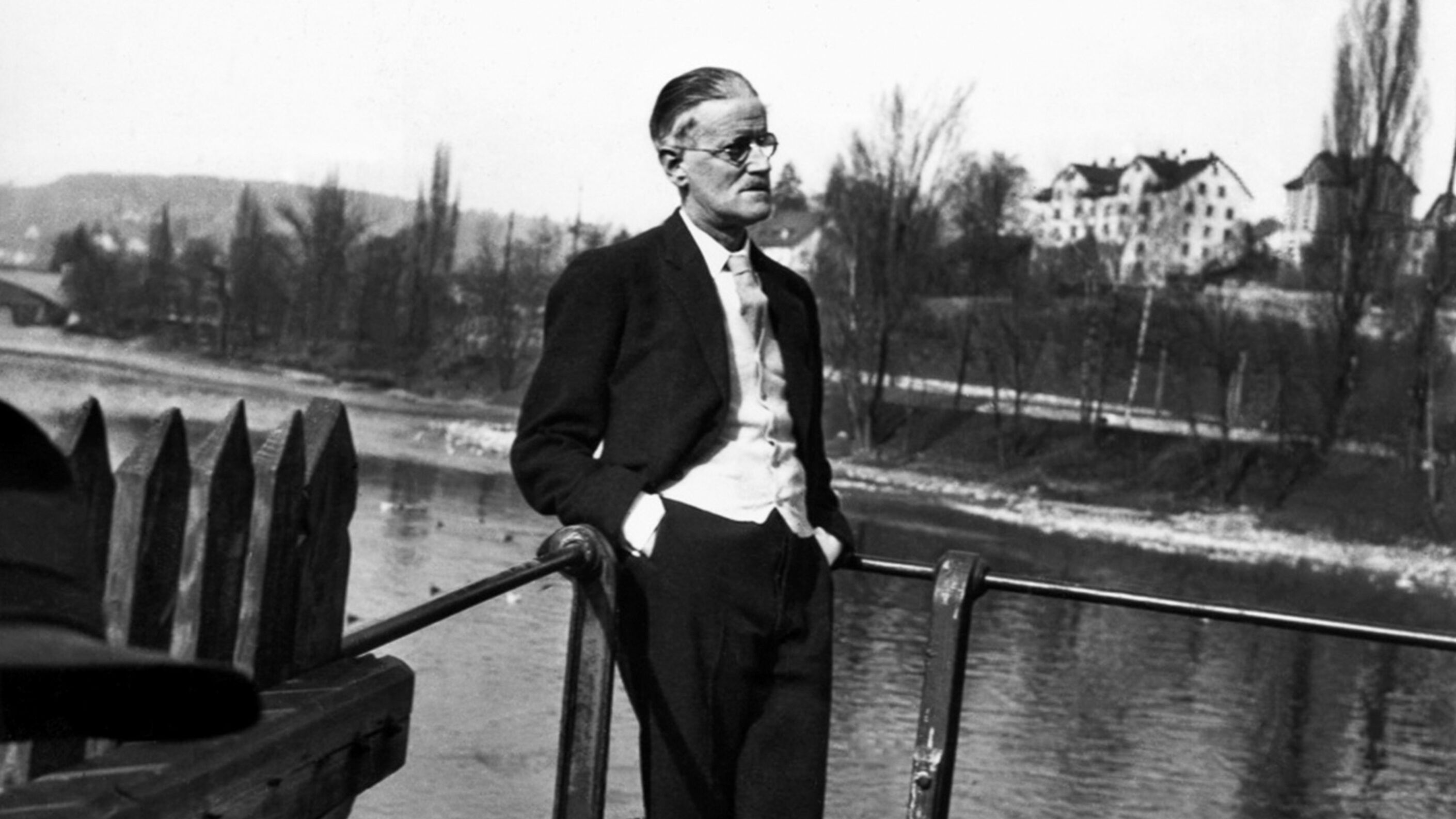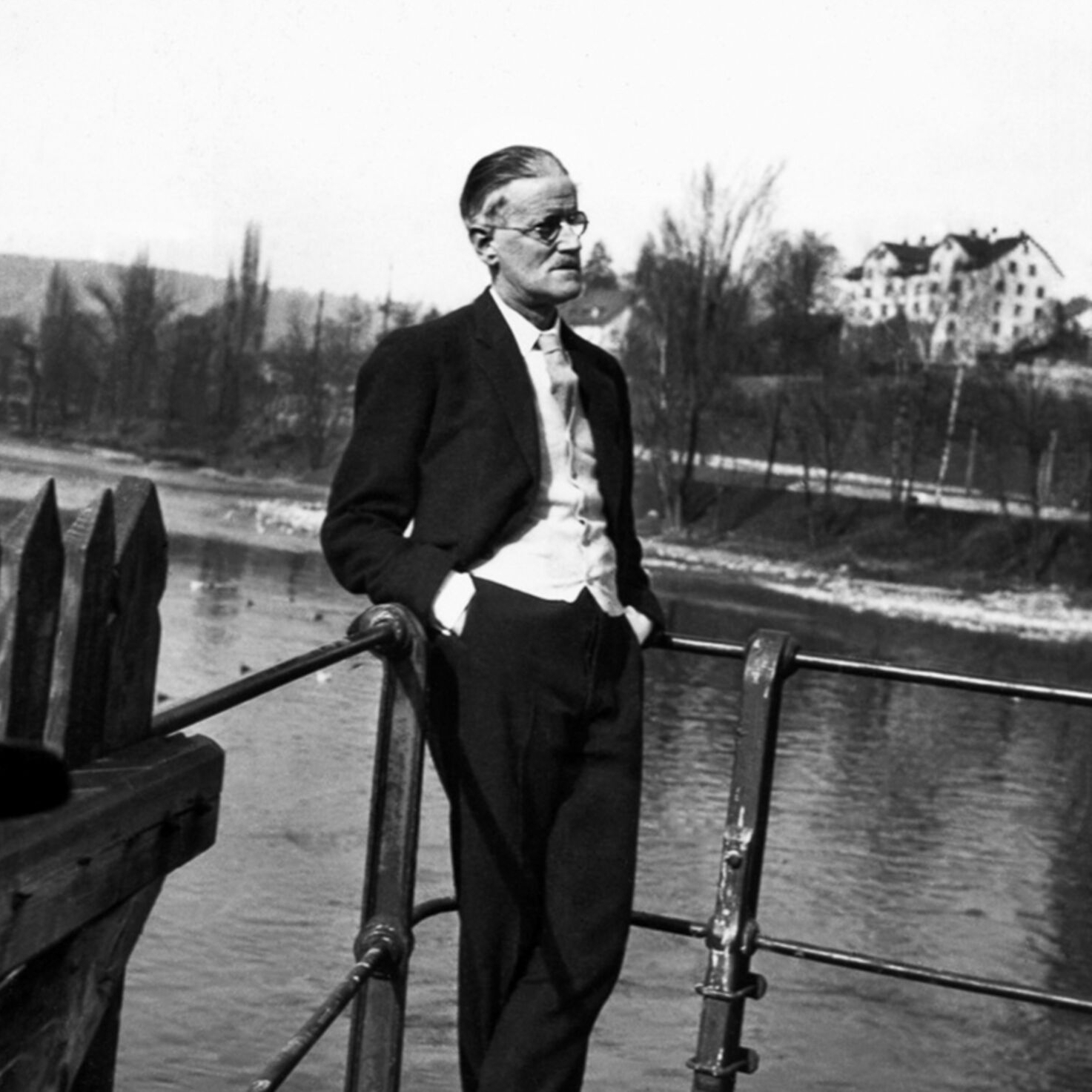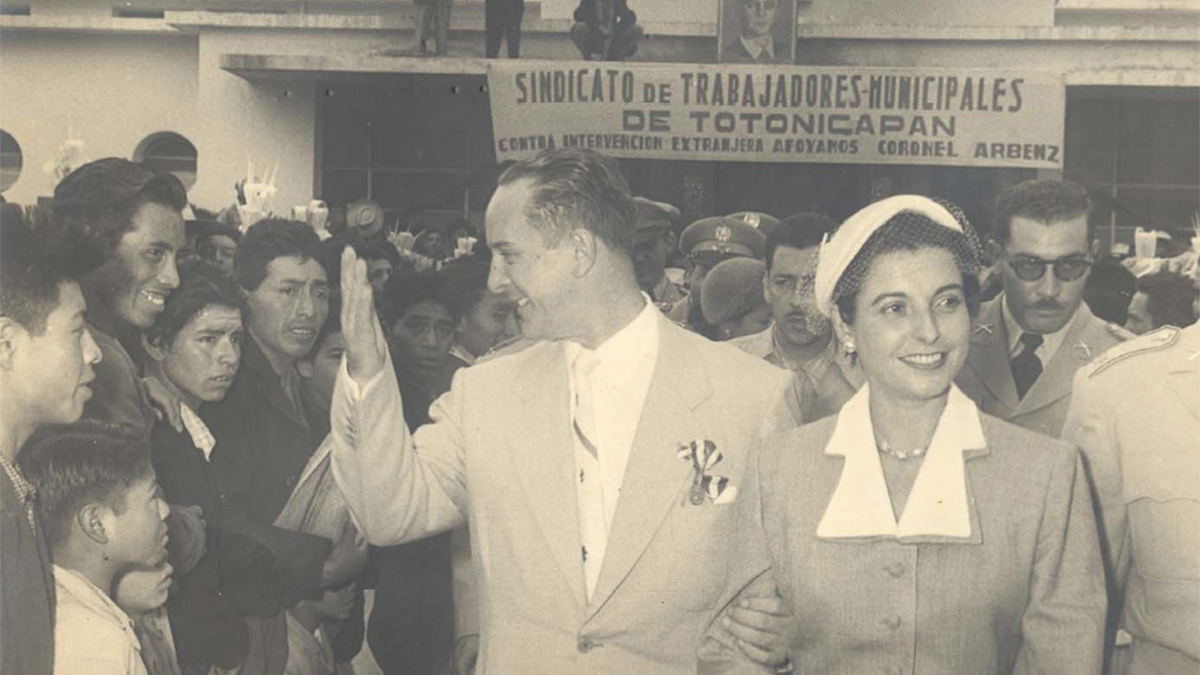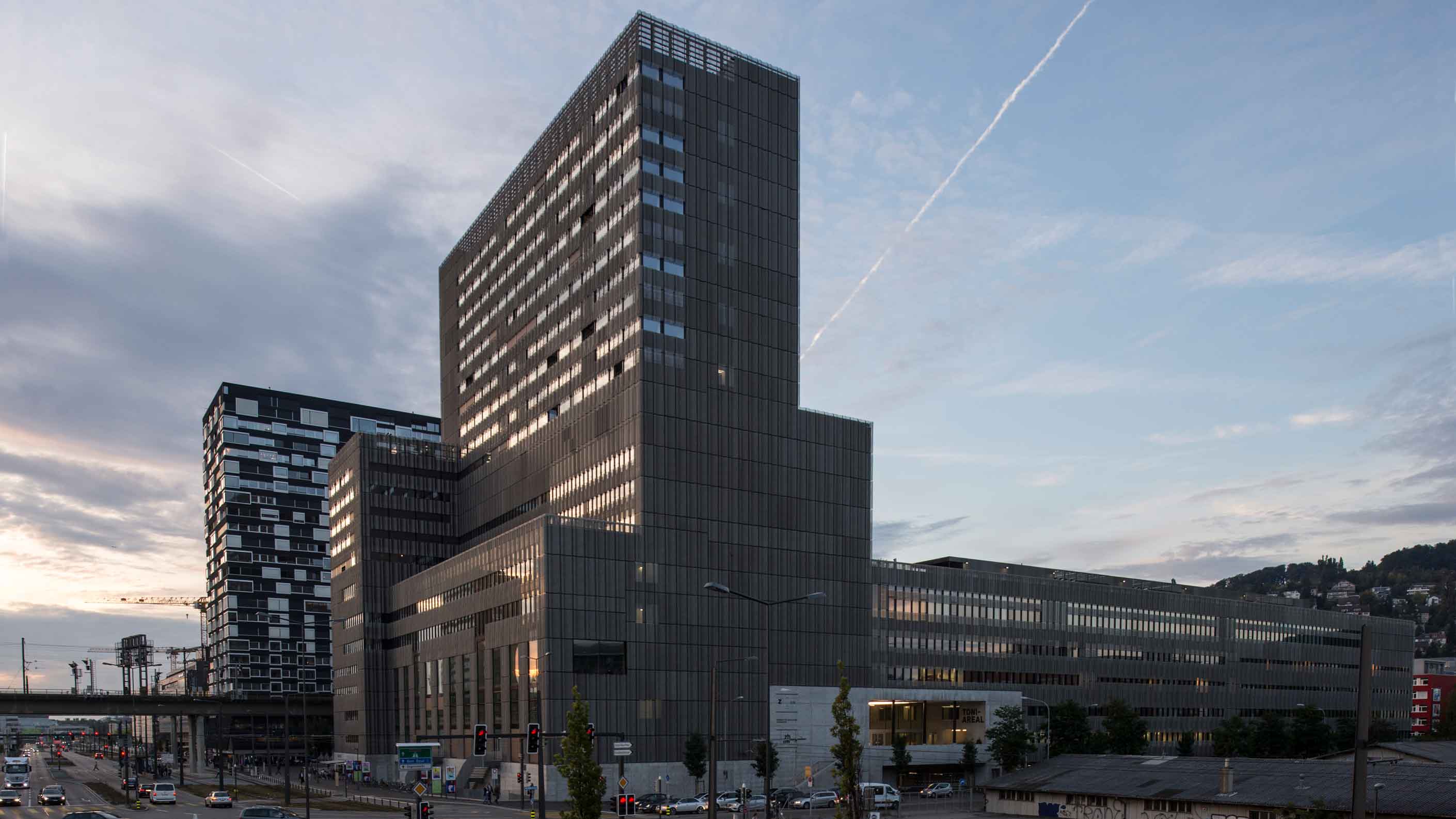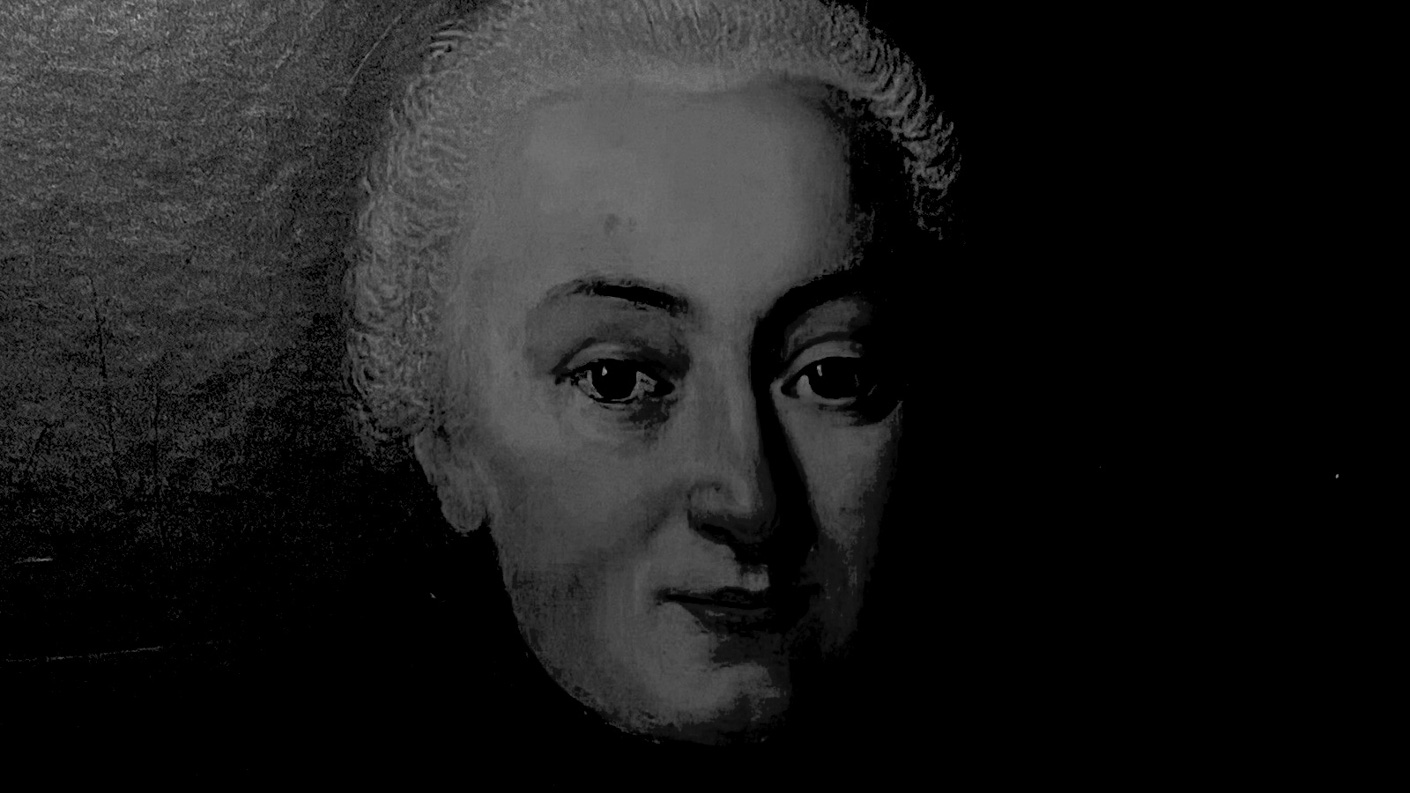Finding James Joyce in Zurich
James Joyce’s impact upon world literature is profound and he wrote a sizable portion of Ulysses in Zürich – a city that he enjoyed immensely and called home several times during his tumultuous life.
James Joyce’s Early Years
Born in the Dublin suburb Rathgar in 1882, James Joyce grew up as one of ten children. His father was an impoverished tax collector who, nevertheless, valued education. As a result, Joyce attended a series of excellent Catholic schools and eventually matriculated into University College, Dublin. He distinguished himself through his academic performance, but he disappointed his family and educators alike when he declined to become a priest and expressed deep ambivalence towards Catholicism. Inspired by the great poets and writers of the past, Joyce decided instead to try his luck as a writer in Belle Époque Paris. During his first stay in Paris, Joyce made a living by offering English lessons to students at the Sorbonne and writing book reviews. Joyce returned to Ireland to be at his mother’s deathbed in 1903. He married a lady from Galway, Nora Barnacle, the following year. Completely dissimilar in matters of personal preference and emotionality, their union, however, was a lifelong, passionate match. It was Nora who persuaded Joyce to relocate to the Italian city of Trieste, which was then under Austro-Hungarian rule. There they could start fresh and lessen the burden of their debts.
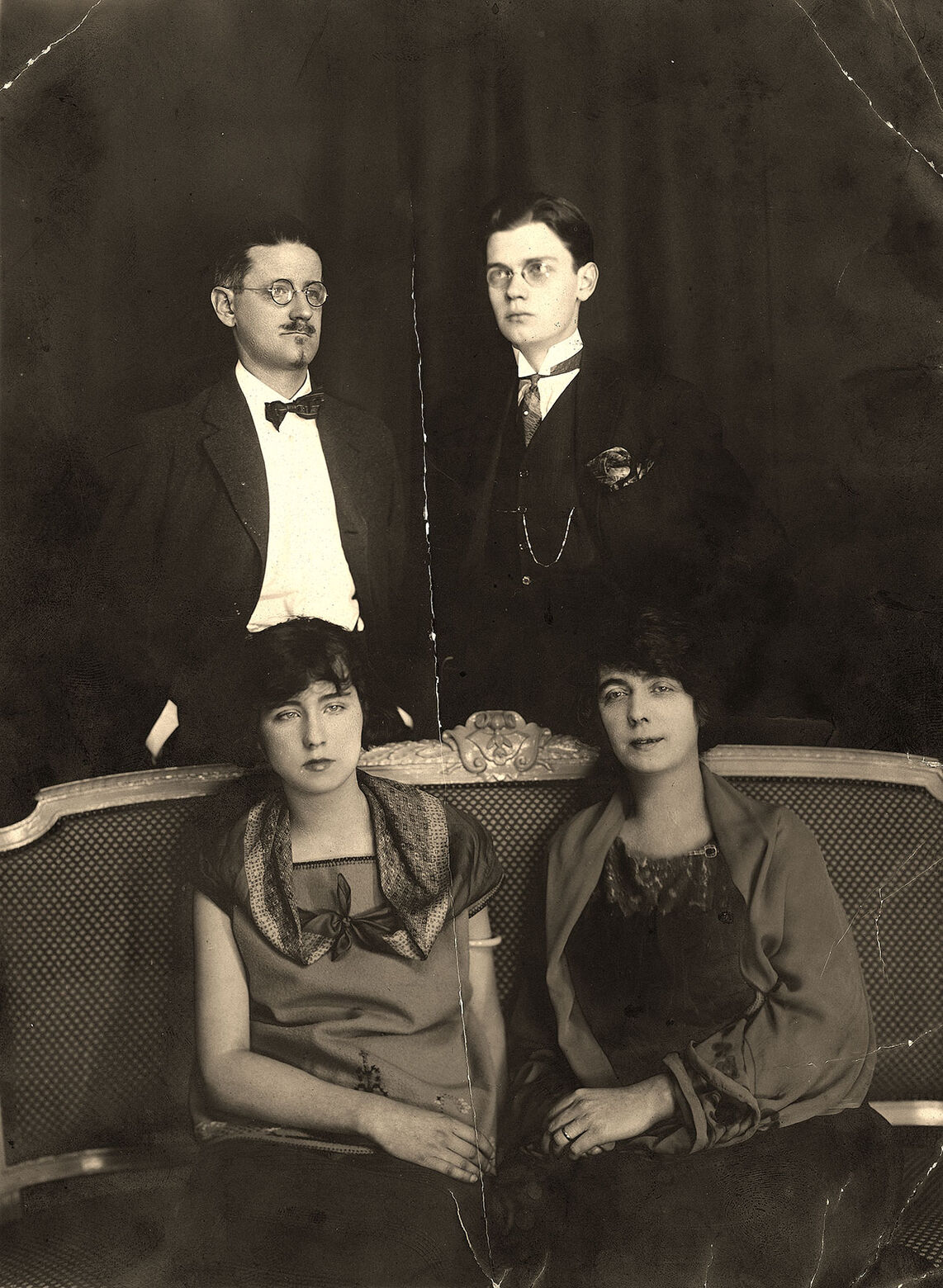
Photography of James Joyce with his wife Nora, son Giorgio and daughter Lucia, Paris, 1924. University College Dublin, Digital Library
En route to Trieste, Joyce stopped through Zürich for the first time in October 1904, spending a week in the city in the hopes that he might secure a teaching position. Between 1906 and 1915, James Joyce resided with Nora and their newborn two children, Giorgio and Lucia, in Trieste, but he made extended stays Rome and in Dublin as well. Joyce continued to concentrate on his writing, while simultaneously teaching English at the Berlitz school in Trieste. In 1907, Joyce published a book of poems, Chamber Music, but he received little financial reward, much to his chagrin. Joyce persisted in his efforts, but he would have to wait seven years until the American poet Ezra Pound would review Dubliners favorably and thus change his life forever. Pound assisted Joyce further in helping him secure the serialization of A Portrait of the Artist as a Young Man in a British magazine.
Cooperation
This article originally appeared on the Swiss National Museum's history blog. There you will regularly find exciting stories from the past. Whether double agent, impostor or pioneer. Whether artist, duchess or traitor. Delve into the magic of Swiss history.
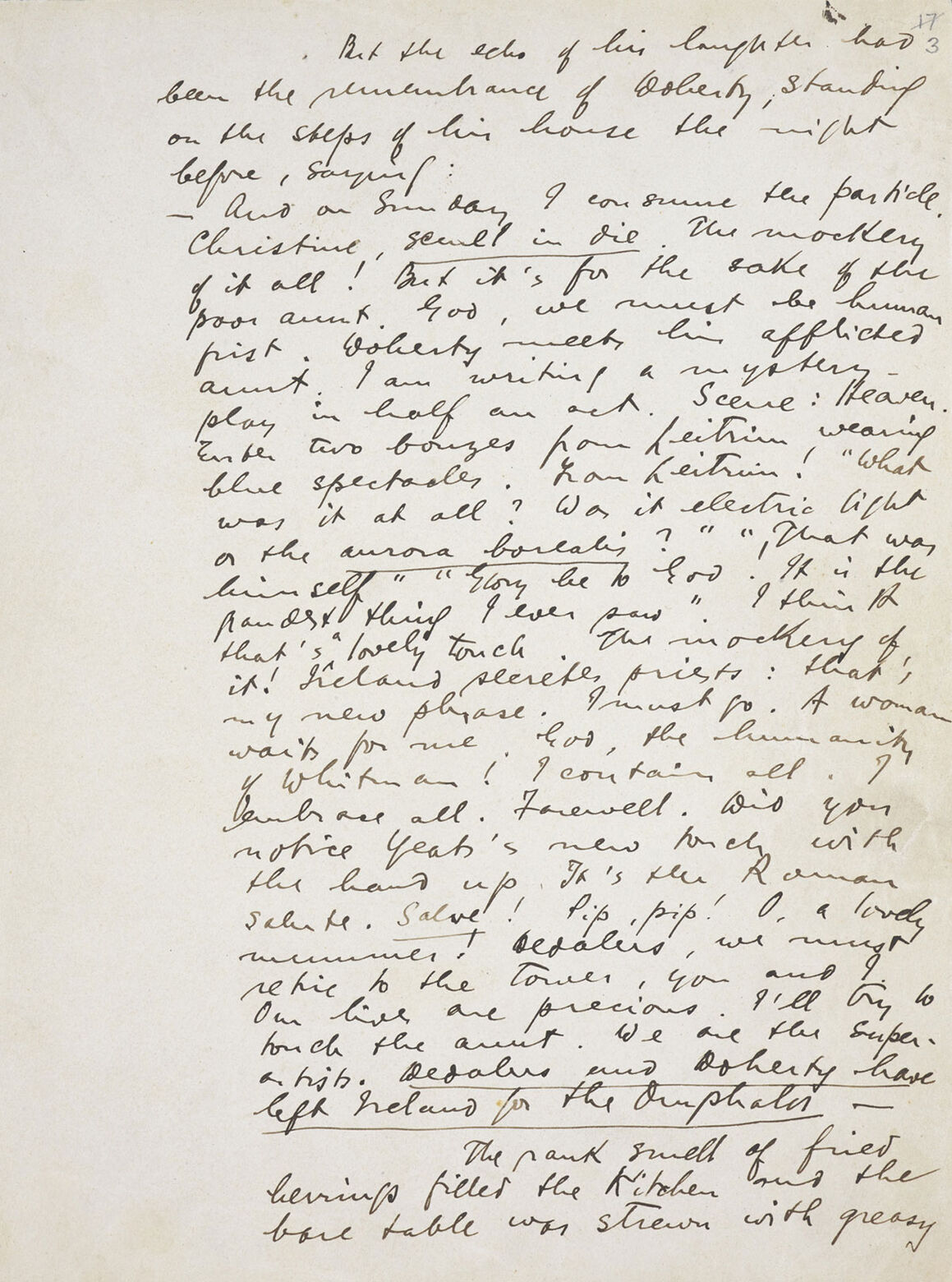
Fragment from the manuscript draft for A Portrait of the Artist as a Young Man, ca. 1912-1921. British Library
Despite these successes, Joyce’s fortunes, like all Europeans, would change irrevocably when World War I began in July 1914. Italy signed the Treaty of London April 26, 1915 and declared war against Austria-Hungary on May 23, 1915. Knowing that the Italians coveted Trieste and anticipating that they would direct their forces against the Austrian Littoral and Carniola, Joyce soon pawned all of his furniture and escaped with his family to Switzerland.
«…if you spilled minestra on the Bahnhofstrasse you could eat it right up without a spoon…»
James Joyce’s bemused opinion as to the fastidiousness of Swiss hygiene.
Zürich & Literary Success
Vladimir Lenin, Tristan Tzara, Jean Arp, Hugo Ball, Albert Einstein all found safety in Zürich during the First World War or in its immediate aftermath. Joyce enjoyed the vibrant, fertile cultural milieu of Switzerland’s largest city. He socialized at bars all across Zürich, meeting friends and making new acquaintances at Café Odeon. Something of a gourmand, Joyce relished his visits to Restaurant Kronenhalle and Zum Weissen Kreuz too, albeit, when he had the funds to spare. Unsurprisingly, Joyce spent a great deal of his time at Zürich Zentralbibliothek. It is known from library records that he consulted and checked out books related to ancient Greek literature and history presumably to help him write Ulysses. When he had free time, Joyce quenched his thirst for English periodicals and plays by visiting the Museumsgesellschaft and the Kaufleuten Theatre.
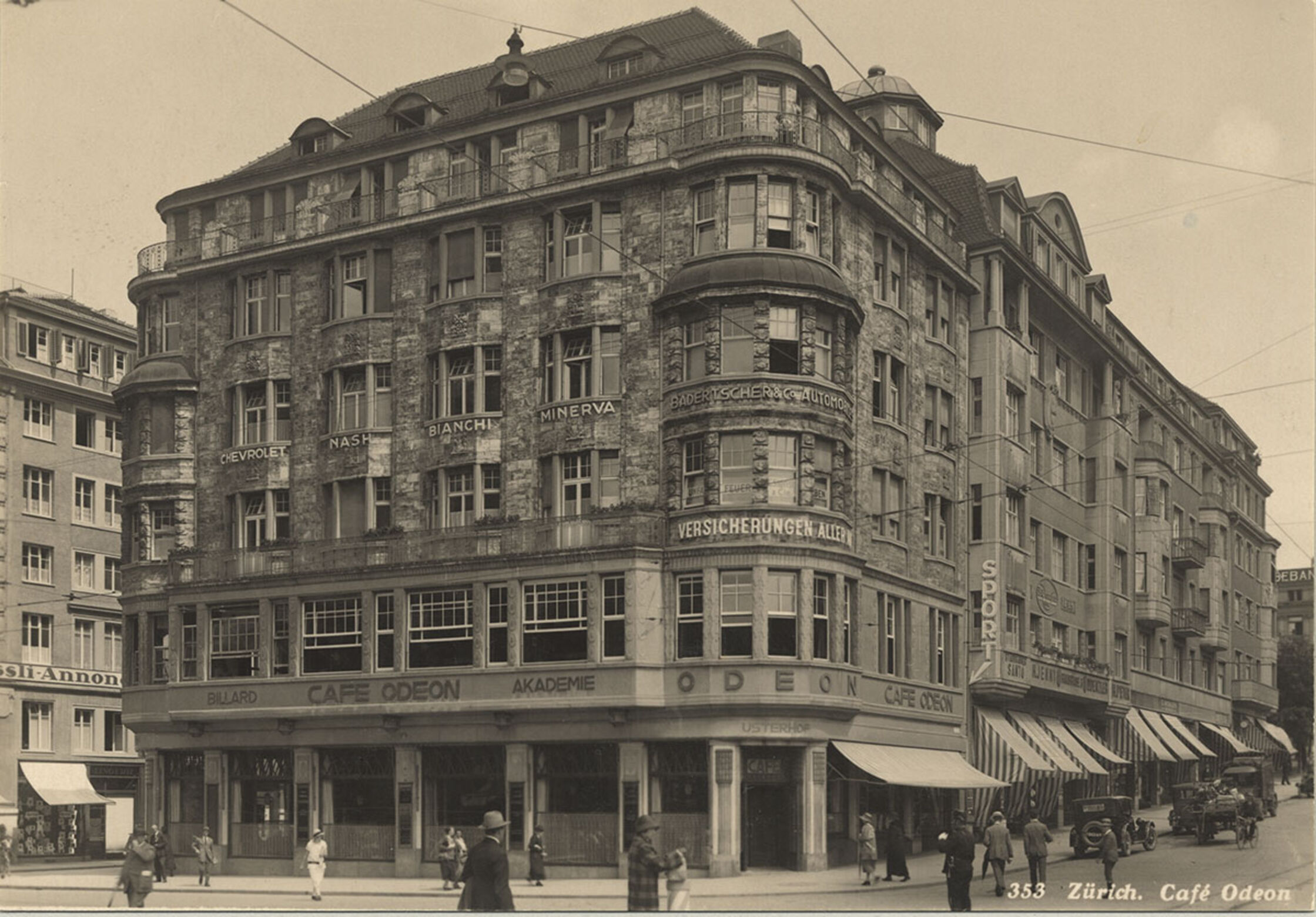
Postcard with Café Odeon, date unknown. Baugeschichtliches Archiv, Stadt Zürich
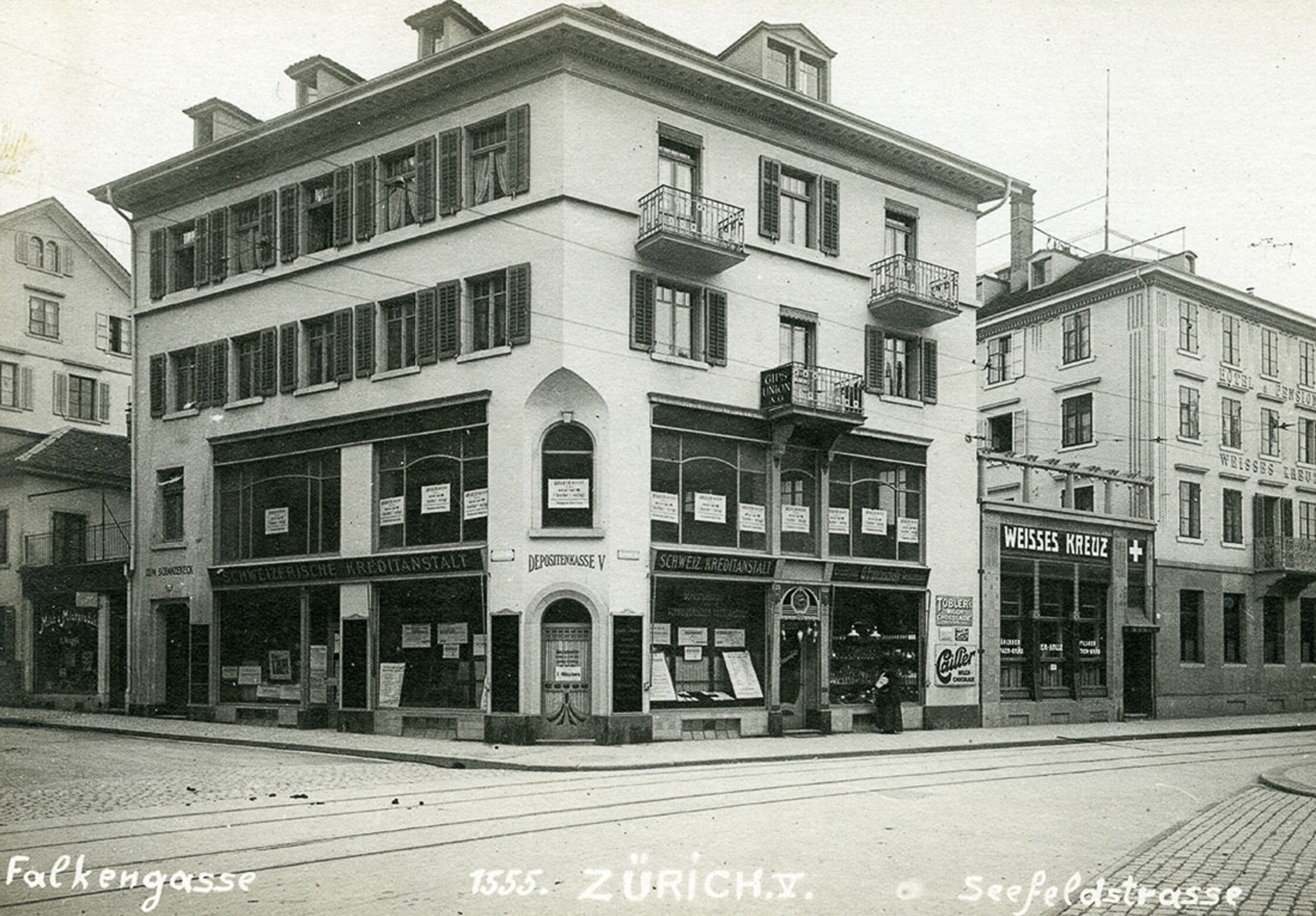
Restaurant Weisses Kreuz on Seefeldstrasse, photograph by Friedrich Ruef-Hirt, 1905-1910. Baugeschichtliches Archiv, Stadt Zürich
It is also known that Zürich’s Augustinerkirche on Münzplatz – which rejected papal infallibility – amused him greatly. Nonetheless, his favorite place in Zürich lay at the confluence of the Sihl and Limmat Rivers in the Platzspitz-Park behind the Landesmuseum. It was a place of peace and contemplation during an energetic period in his life. On a plaque near the Landesmuseum, the letter “i” in “Sihl” and “Limmat” has been replaced with “j” in his honor.
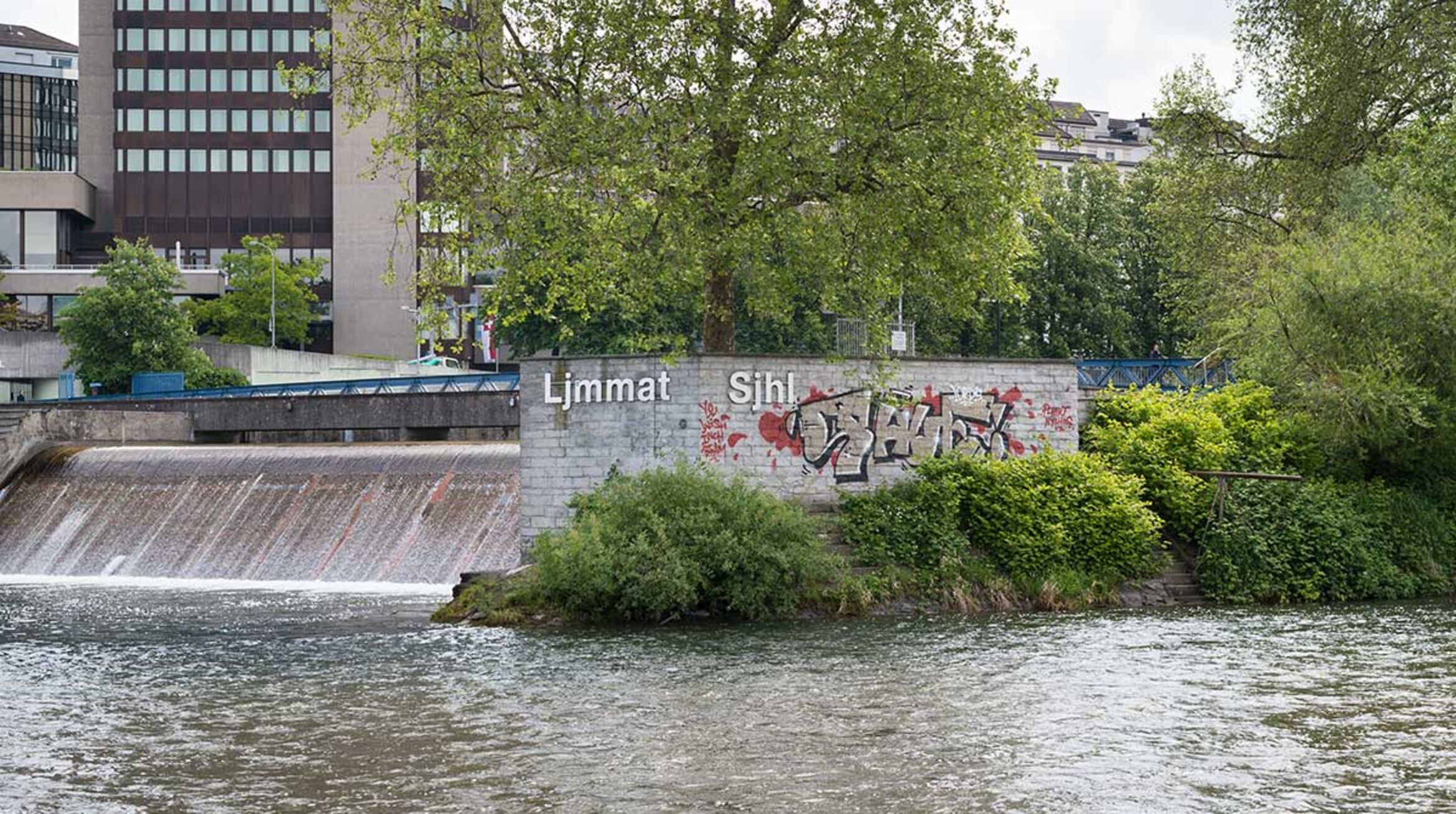
Artwork by Hannes + Petruschka Vogel, Ljmmat Sjhl: Hommage à James Joyce, 2004, Zurich. Foto: Pietro Mattioli. Stadt Zürich, Kunst im öffentlichen Raum
Joyce’s time in Zürich was busy and peripatetic. Although Joyce increasingly received financial bequests and gifts from donors – like W.B. Yeats, the godfather of the Irish Literary Revival movement – as well as the occasional royalty cheque, he moved a great deal much to the annoyance of Nora. The Joyce family inhabited four different apartments in Zürich’s Seefeld district alone due to fluctuating financial circumstances. The family resided further in two different abodes along Universitätstrasse in the Oberstrass district between 1918 and 1919.
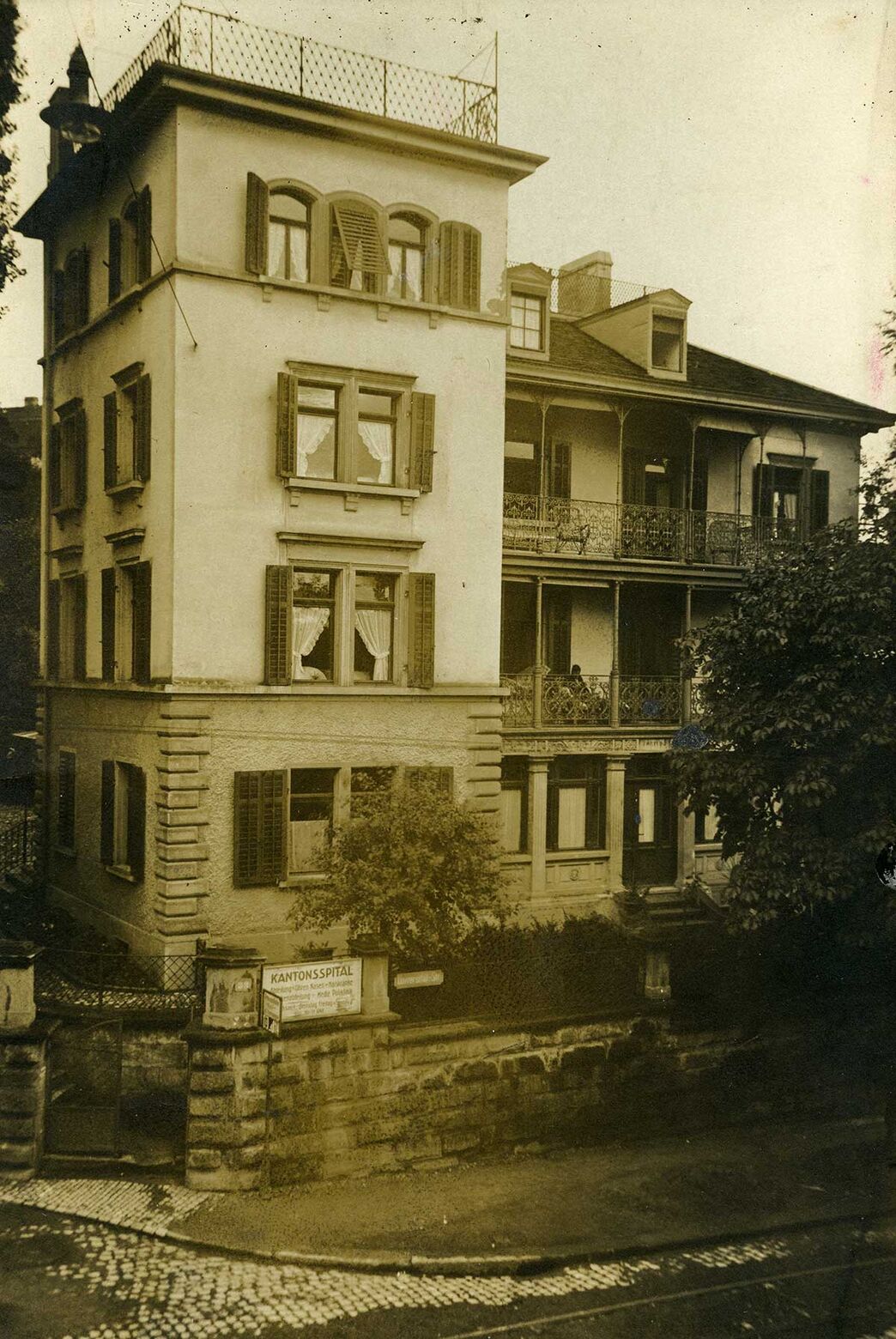
Joyce lived on the second floor of Universitätstrasse 38 (now Haldenbachstrasse 12) in 1918 and wrote five chapters of Ulysses. Baugeschichtliches Archiv, Stadt Zürich
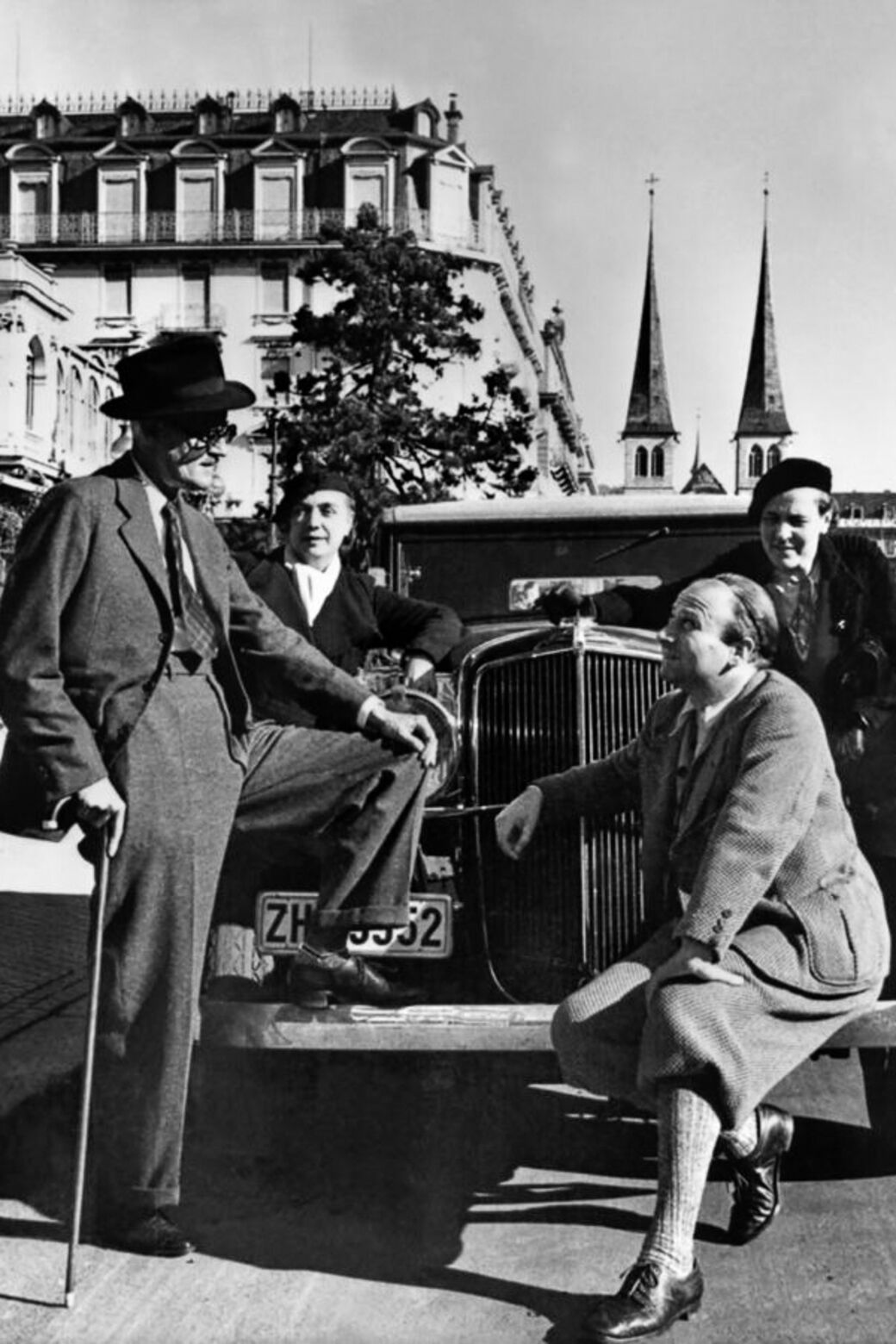
James Joyce on a trip to Lucerne, together with his wife Nora, Hans Curjel and Carola Giedion-Welcker (from left to right) in 1935. Keystone / Zurich James Joyce Foundation / Sigfried Giedion
Ulysses and Frequent Returns Visits to Zürich
Joyce concentrated on writing the early chapters of Ulysses during his sojourn in Zürich, despite worsening vision as a result of glaucoma and cataracts. Ulysses, loosely based on Homer’s Odyssey, charts the events and interactions of three Dubliners over the course of a single day in 1904. The ways in which Homer’s epic reflected and interpreted the world of the ancient Greeks captivated Joyce. He attempted to do something similar by mirroring and interpreting the busy lives of his Edwardian characters in the early twentieth century. Joyce’s pioneering literary innovations, in the sphere of narrative technique and stylized language, reformulated the way in which novels could be written and enjoyed. Ulysses originally appeared in magazine installments between 1918 and 1920. A completed edition was refused publication in Great Britain and the United States due to what was perceived as scandalous vulgarity. In France, a limited edition was published by Sylvia Beach in 1922.
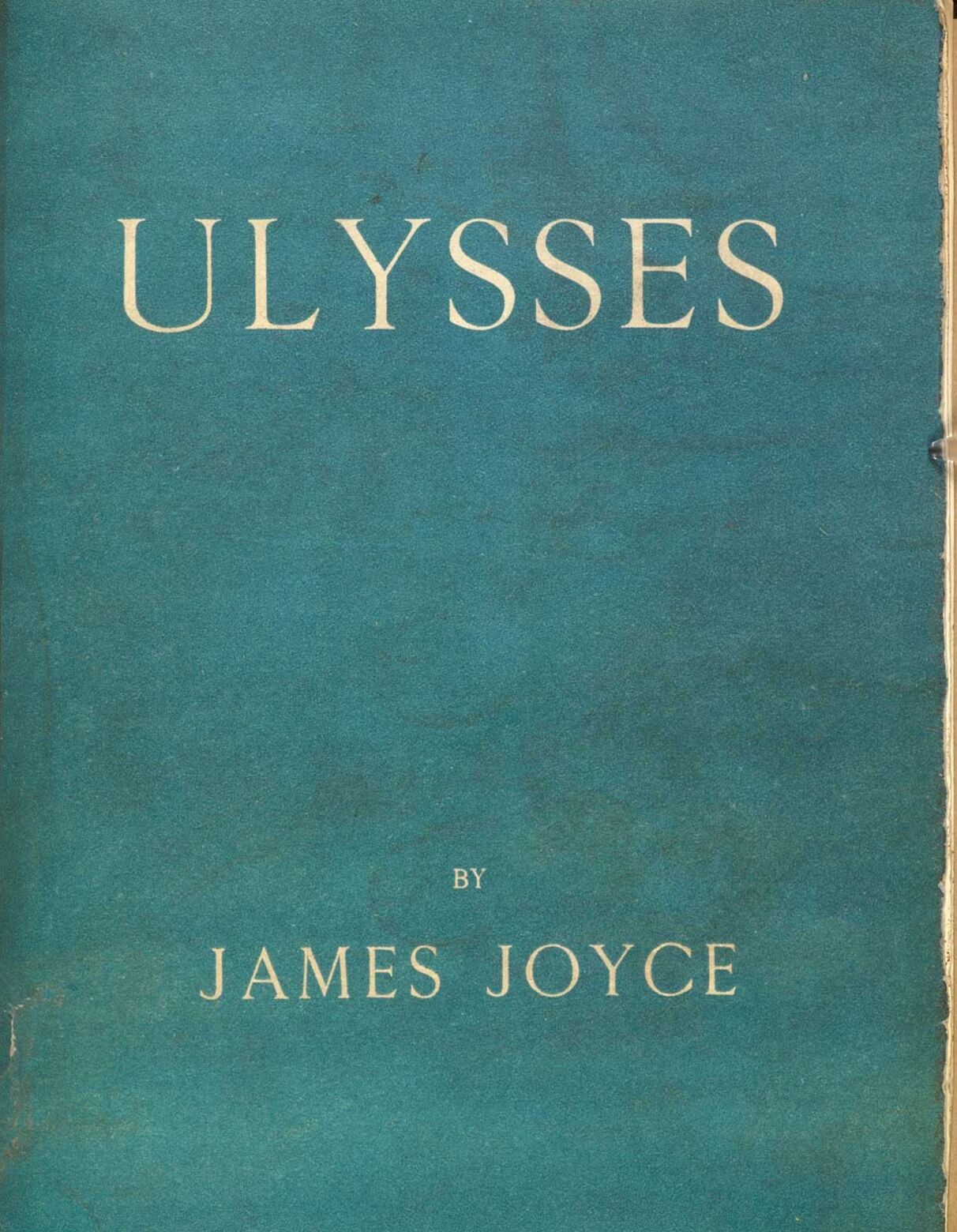
First edition of Ulysses published by Sylvia Beach, owner of the Shakespeare and Company bookstore in Paris, 1922. British Library
It was only after a court case in 1934, that Ulysses finally appeared in print in the United States and received widespread acclaim. By then, Joyce lived in Paris once more, but he traveled frequently to Zürich for eye surgeries and to seek psychological therapy for his daughter, Lucia. During his visits, he continued to write – several chapters of Finnegans Wake were written as he stayed in hotels along Bahnhofstrasse. Increasingly weak and in poor health, Joyce returned to Switzerland after the fall of France in 1940. Plagued by a mélange of ocular issues and a duodenal ulcer, he died on January 13, 1941 and is buried in Zürichberg’s Fluntern Cemetery. Curiously, Joyce is buried not that far from another renowned author, the Nobel Prize-winner Elias Canetti.
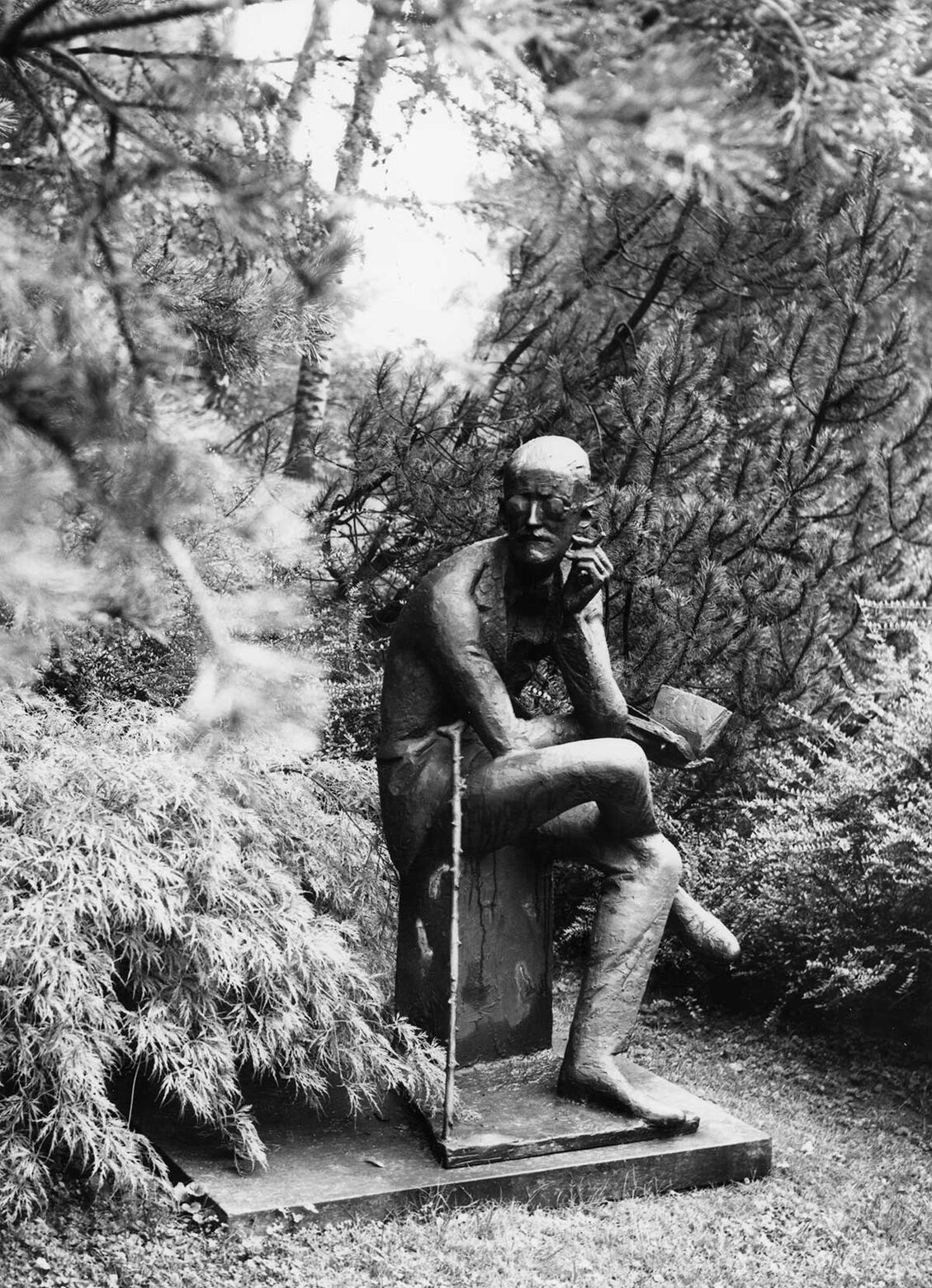
Tomb of James Joyce at Fluntern Cemetery, 1972. Baugeschichtliches Archiv, Stadt Zürich
